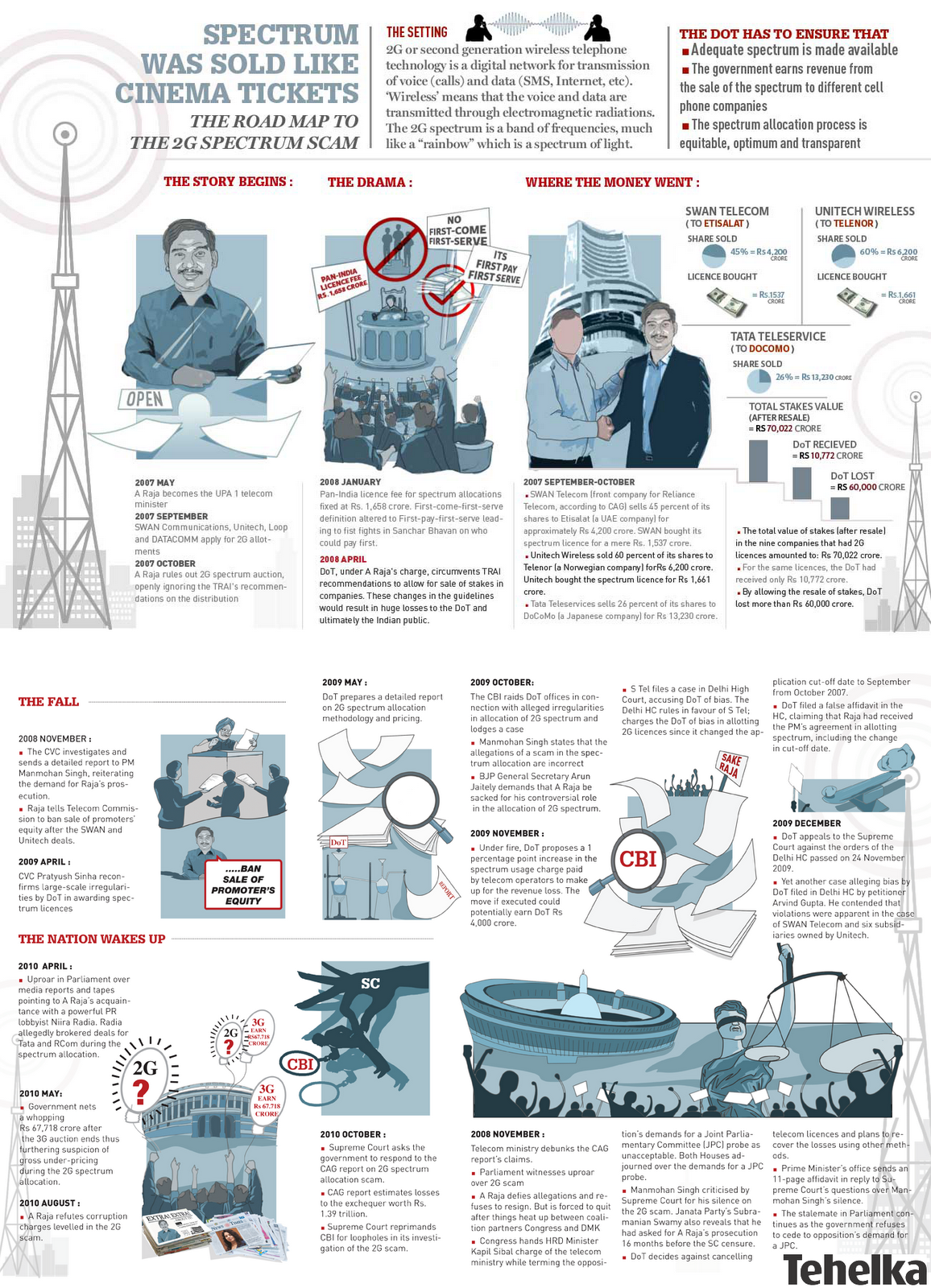The 2G Spectrum Scam Saga
In a verdict that has sent shock waves throughout Indian political landscape, the Supreme Court quashed all the 122 licences awarded to 12 companies to run for 2G operations by then Telecom Minister A. Raja.
The SC said that the arbitrary allocation of the 2G spectrum was a scam and not the consequence of a government policy. The apex court indicted former telecom minister A. Raja for “virtually gifting away an important national asset at throwaway prices” while claiming that officers were “cowed” down fearing his “wrath”.
Writing in the Tehelka magazine, Paranjoy Guha Thakurta contends that, "the incredibly fast expansion of mobile telecommunications in India has been accompanied by a series of scandals that are a consequence of poor regulatory oversight and deliberate manipulation of policies to favour a select clutch of companies. The biggest and most brazen of these scandals relate to the undervaluation of a valuable national resource — electromagnetic spectrum or radio frequencies used by mobile phone service providers — by the Department of Tele - communications (DoT) under former Minister for Communications and Information Technology A Raja.
"According to a report of the Comptroller & Auditor General (CAG) of India tabled in Parliament on 16 November, the total “presumptive” or “notional” loss to the national exchequer on account of undervaluation of spectrum was in excess of Rs1.7 lakh crore or nearly $40 billion at current exchange rates, making it the biggest scandal of its kind in the country.
The enormity of the scandal was acknowledged only after the Supreme Court started asking pointed questions of government agencies and the CAG came out with a scathing indictment of DoT policies and practices. Raja was forced to resign his post and the Central Bureau of Investigation (CBI) made to expedite its investigations that had begun in October 2009 with the lodging of a First Information Report (FIR) against “unknown” persons.
"The CAG contended that (a) by underpricing second generation (2G) spectrum, (b) by allowing companies to use two competing technologies — the global system of mobile (GSM) communications and the Code Division Multiple Access (CDMA) technology — using the same licence and (c) by allocating more spectrum to companies than what their licences specified, the total loss to the country could be as much as Rs1,76,645 crore — more than Rs10,000 for each citizen or over four times the current annual budget of the “world’s largest social security scheme”, the programme under the Mahatma Gandhi National Rural Employment Guarantee Act.
"If the prime minister was indeed aware of what was going on, why did he not take any action against Raja? Why did he remain silent when Raja claimed that he had his approval while allotting licences whereas the CAG categorically stated that he had blatantly flouted the prime minister’s advice? These are the questions that have raised a huge political storm, completely paralyzed the winter session of Parliament for three weeks and strained relations between the Indian National Congress and its partner in the United Progressive Alliance (UPA) coalition from Tamil Nadu, the Dravida Munnetra Kazhagam (DMK)."
Here's how the mega scam unfolded. Click on the graphic for a larger view.

